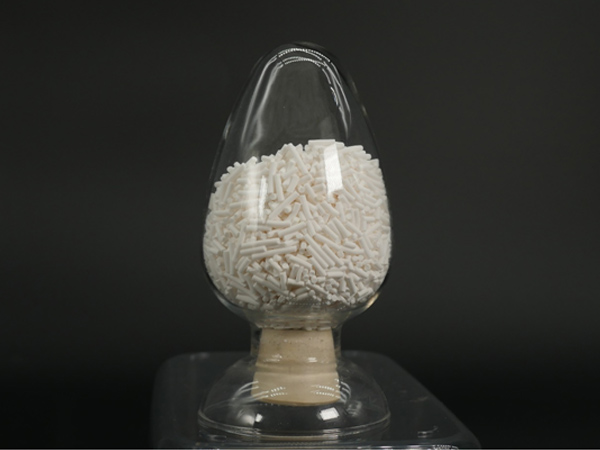
summary:
Epoxy propane (PO) is a raw material for producing polyether polyols and further producing polyurethane. The complete set of epoxy propane technology uses propylene, hydrogen peroxide isopropylbenzene (CHP), air, and hydrogen as raw materials, and produces isopropylbenzene through isopropylbenzene oxidation, propylene epoxidation, and dimethyl benzyl alcohol (DMBA) hydrogenolysis. The isopropylbenzene is recycled to produce epoxy propane. Since 2003, comprehensive research has been conducted on the complete technology of synthesizing PO, and high-performance titanium containing mesoporous propylene epoxidation catalysts and bifunctional DMBA hydrogenation catalysts with superhydrophobic properties have been successfully developed. Based on the above catalyst, a green and environmentally friendly PO complete set technology with atomic economic reaction characteristics has been successfully developed.
This project has obtained a total of 43 authorized invention patents in China and won the second prize of the China Petrochemical Forward looking Basic Research Science Award.
Epoxy propane complete technology:
Epoxy propane technology is a green and environmentally friendly complete set of PO technology with atomic reaction economic characteristics. A 150000 ton/year PO industrial demonstration plant has been built in Tianjin Petrochemical. Its technical characteristics are as follows:
(1) The epoxidation reaction system is safe and efficient: a multi-stage series connection, interstage heat withdrawal propylene epoxidation reaction and control system; Higher concentration CHP raw materials and lower propylene/CHP ratio can be used to reduce energy consumption; By arranging the reactor sequence reasonably according to the different reaction activities of the catalyst life cycle, it is possible to ensure the full conversion of CHP and eliminate safety risks.
(2) The hydrogenation reaction system is efficient and energy-saving: the dehydration and hydrogenation of dimethyl benzyl alcohol are effectively coupled, and a dual functional Pd based hydrogenation catalyst has been successfully developed. Based on the characteristics of bifunctional catalysts, the two-stage hydrogenation process is ingeniously designed to achieve the unity of high catalyst selectivity and high conversion, significantly reducing the loss of isopropylbenzene.
(3) Efficient product refining process and excellent product quality: Organic acid enrichment alkali washing/water washing removal process, using high-efficiency alkali washing/water washing equipment to effectively remove organic acids from a small portion of reaction liquid products, reducing the loss of PO in the alkali washing process. We have developed a PO extraction distillation process and an extraction agent purification process to improve the purity of the circulating extraction agent and PO yield. The purity of PO products has reached over 99.99%.
Epoxidation and Hydrolysis Catalysts:
The complete set of epoxy propane technology includes two catalysts: superhydrophobic Ti/HMS epoxidation catalyst and bifunctional Pd based hydrogenation catalyst.
The main characteristics of Ti/HMS epoxidation catalyst are as follows:
Excellent performance of epoxidation catalyst: For the first time, based on the principles of bionics, a highly efficient titanium containing mesoporous molecular sieve epoxidation catalyst Ti/HMS with ultrafine nanopore structure and superhydrophobic properties was created for the production of PO by CHP oxidation of propylene, utilizing the superhydrophobic characteristics of lotus leaves and their ultrafine nanostructure and surface wax layer mechanism
(1) High activity: The CHP conversion rate of Ti/HMS epoxidation catalyst reaches over 99%.
(2) High selectivity: The selectivity of Ti/HMS epoxidation catalyst for PO and DMBA reaches over 99%.
(3) High stability: The lifespan of Ti/HMS epoxidation catalyst reaches 6-12 months (similar products have a lifespan of 4.5-9 months)
(4) Environmentally friendly: The catalyst has no harmful or corrosive components, and does not pollute the environment.
The main characteristics of the bifunctional Pd based hydrogenation catalyst are as follows:
(1) High activity: The conversion rate of Pd based hydrogenation catalyst DMBA reaches over 99%.
(2) High selectivity: The selectivity of Pd based hydrogenation catalyst for isopropylbenzene reaches over 99.5%.
(3) High stability: The dual function Pd based hydrogenation catalyst has a lifespan of over 2 years, maintaining long-term stable operation and maintaining reaction performance during operation.
(4) Environmentally friendly: The catalyst has no harmful or corrosive components, and does not pollute the environment.
Promotion application:
The complete set of epoxy propane technology has been approved for Tianjin Petrochemical's 150000 tons/year PO industrial demonstration plant and has been successfully put into operation.



